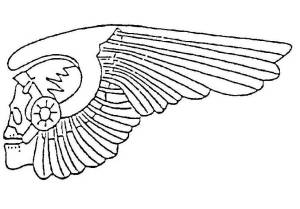There’s an old comedy bit where the comic offers to teach you “everything you’re going to remember from college, ten years after graduation.” The crash course is offered at a hefty price, but much less than four years of actual college tuition. There’s a little of that in what we’re going to discuss here today, except for the hefty price of course.

Once you absorb all the knowledge in this article, people will come from miles around to meet you and marvel at your Giant Trademark Brain. And the Law of Averages says that some percentage of them will buy your product, too.
In more than 20 years of advising business owners in the area of trademark law, I’ve noticed many little tidbits of knowledge that I find myself passing along to client after client. These are things that most business owners and marketing people either don’t know at all or have enduring misunderstandings about.
Thing 1: Trademark rights are created by use of the mark on your goods or services. Registration of your mark is an important way to increase and extend those rights.
Thing 2: There is no functional difference between “trademarks” and “service marks” – trademarks identify goods (for example, BUDWEISER® for beer) and service marks identify… that’s right, services (e.g., HOLIDAY INN® for hotel services.) So for the rest of this post, let’s simplify things by calling them all trademarks, or just marks.
Thing 3: You don’t register a trademark for “everything,” you register it for specifically identified goods and/or services that are spelled out in your application. The more types of “things” you want to cover, the more you’ll pay in filing fees for the application.
Thing 4: Give a lot of thought to what goods/services you want to cover before filing your trademark application, because once the application is filed you cannot broaden its coverage (you can only narrow it, by taking things out.)
Thing 5: New trademark applications literally are filed every minute at the U.S. Patent and Trademark Office. Once you decide on a mark and goods/services, file your application as soon as possible to minimize the chances that someone else will “beat you to the punch.”
Thing 6: No, you cannot file a trademark application or keep alive a registration for a mark you have no current intention of using, just to “keep people away from it.”
Thing 7: The designations TM and SM that you see everywhere really have no official significance. They are used unofficially, to indicate that the user regards the name as proprietary.
Thing 8: You may not use the ® symbol with your mark until your mark is actually registered (not just filed.) After the registration issues, you should always use it at least once on every package, advertisement, marketing piece, etc.
Thing 9: You should always search a new product name (the earlier the better) before committing to it or using it. Not doing so is a dare to the Trademark Infringement Gods.
Thing 10: Because trademark rights arise from use (see Thing 1 above), trademark searching is an art and not a science. When searching for potential users of conflicting marks in the vast universe of information out there, you have to choose some logical place to stop. Always remember that, for these reasons, no trademark search is perfect – just the best search reasonably feasible at the time it’s conducted.
Thing 11: Minor differences in spelling and inventive spellings won’t make an otherwise infringing mark “safe” to use or register.
Thing 12: In a similar vein, you probably attach a much greater significance to small product differences within your industry than the general public (or a judge) will. This means that when comparing products to determine whether you infringe someone else’s mark, the judge is not going to be swayed by the argument that “no one could be confused because the products are totally different – theirs is a 6-pin device and ours is an 8-pin device!”
Thing 13: When choosing a new name, remember that the more closely it describes the product (or some feature or function of it), the more likely you are to have problems with availability and/or protection. I could give you a half hour on why, but just trust me on this. You’re much better off picking a name that is not descriptive.
Thing 14: Word mark registrations are inherently more flexible than logo/design marks, because use of a registered word mark as a part of your logo is covered by the registration. The reverse is not true.
Thing 15: Because of Thing 14, when first starting down the registration path (and anytime cost/budget is a large factor), it’s usually advisable to register the word form of your mark first and register the logo version when finances allow.
Thing 16: It can take many months for an application to mature into a trademark registration, but there’s no reason to hold off on using the mark in the meantime. Quite the opposite, in fact – usually you’re better off starting use as soon as possible.
Thing 17: The time to think about whether your new name will actually be available for you to use is as soon as possible. Yesterday, if possible. A month ago, better yet. Leaving that issue until the last minute invites bad decision-making and disaster.
Thing 18: Most trademark infringement disputes are resolved through negotiation before any suit is filed, usually with the “junior user” being provided some time period to shift over to a new name. But don’t take this as an excuse to go forward with a name you know is questionable, because the first sentence often doesn’t apply where the infringement appears intentional. In those cases, the aggrieved party may go straight to court.
Thing 19: Using or registering your new name as a domain name does not create trademark rights, unless you use that domain name in a trademark-like way on your website.
Thing 20: Similarly, merely registering your corporate name with your state’s secretary of state does not create any trademark rights or constitute any type of government approval for you to use the name as a trademark.
Thing 21: In the trademark world, as elsewhere, what goes around comes around. Don’t try to nestle up to a competitor by using a similar mark. You wouldn’t want anyone doing that to you. Don’t make me be your mom on this – Golden Rule, and all that.
This is not, of course, intended as a complete list. Hopefully it is helpful, though. If I get good response on this article, I’ll think up some more bits of important knowledge. And then, dear reader, together we can venture down the uncertain path of the sequel.













